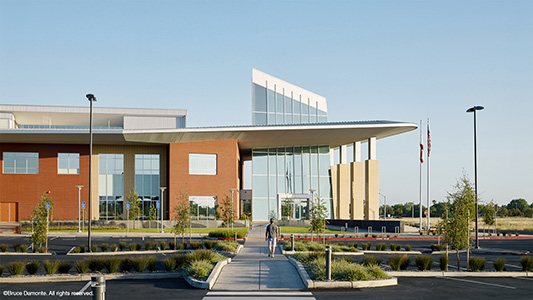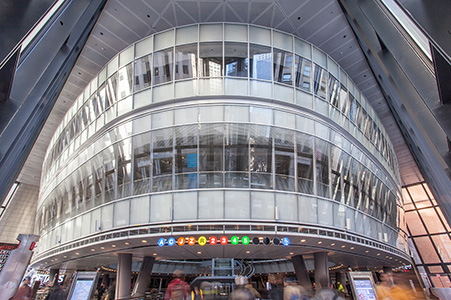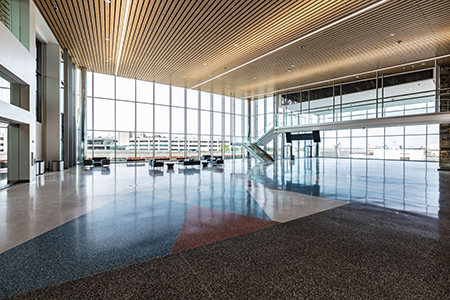Here’s what you need to know about steel curtain wall systems to get started on your next project.


Steel can boost the design and performance capabilities of captured and non-captured curtain wall systems in myriad settings. Some of today’s most popular interior and exterior applications include:
While steel curtain walls provide tremendous design freedom and use, each system is subject to different project conditions, from its specific environment to mullion spacing and glass size requirements. Since the material performs differently than its aluminum cousins, proper specification is critical to success.

Yes. Steel’s strength and versatility has opened the door for more multi-story curtain walls. Since steel systems do not have the same mullion splicing capabilities as conventional aluminum systems, this limits the maximum allowable height these walls can achieve.
The achievable height can vary according to applied loads and thermal expansion and contraction, as well as the structural live load deflection of the supporting floors. The main factor for determining the allowed height is where the curtain wall’s full dead load weight will fall on the structure. Steel framing systems can be designed to distribute the imposed dead load of the curtain wall across multiple floors rather than placing the burden entirely on one level, usually the lowest level in a given set of circumstances. When multiple floors must carry some of the dead load, a double horizontal is required to split the vertical run as opposed to using a conventional splice detail.

Both curtain walls and metal cladding can enhance the appearance and performance of a building’s façade and interior spaces. Determining if a curtain wall is better than metal cladding involves identifying specific project goals and knowing what sets these systems apart.
Curtain walls are non-load-bearing systems. Their metal framing components (usually aluminum or steel) hold different types of infills, including glass. When used in grand entrances, modern façades and visually appealing interiors, glass curtain walls can invite daylight deep into spaces, promote open sightlines and facilitate connection to the surrounding area—all of which support occupant comfort in both new construction and renovations. Additionally, steel-framed glass curtain walls can support advanced glazing to mitigate solar heat gain common in expansive surfaces, promoting energy-efficient buildings.
While also non-structural and non-load bearing, cladding involves attaching metal panels to an existing structure, often to elevate aesthetics or add protection from the elements. Metal panels defend the structure against moisture ingress, which is known to compromise structural integrity and reduce user comfort. For this reason, metal cladding is popularly used in renovation projects. In contrast to glass curtain walls, metal panels are opaque and may not be suited for buildings where daylighting and visual connectivity are important concerns.
While both are non-structural and support resilient architecture, the differences between cladding and curtain walls lie in the individual challenges they solve in construction. For example, a glass curtain wall would be more applicable for a project that prioritized visual connectivity and access to natural light.